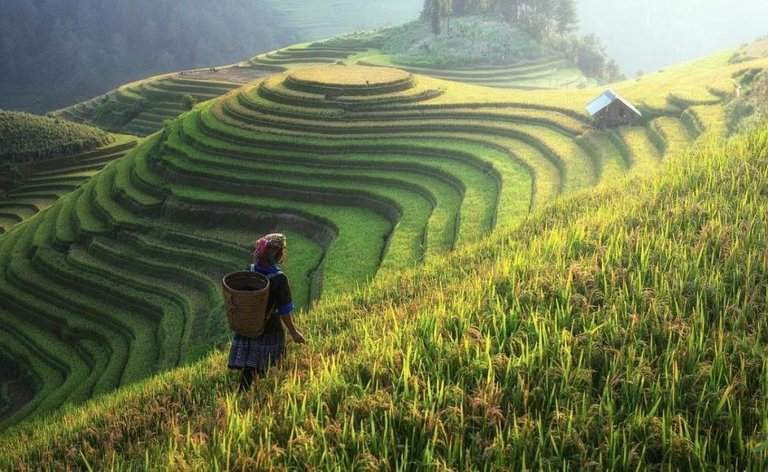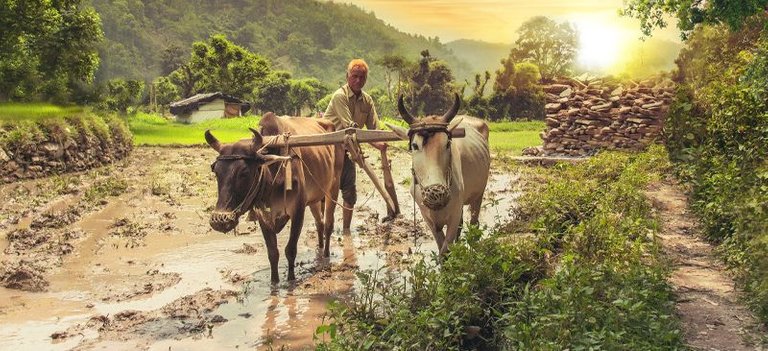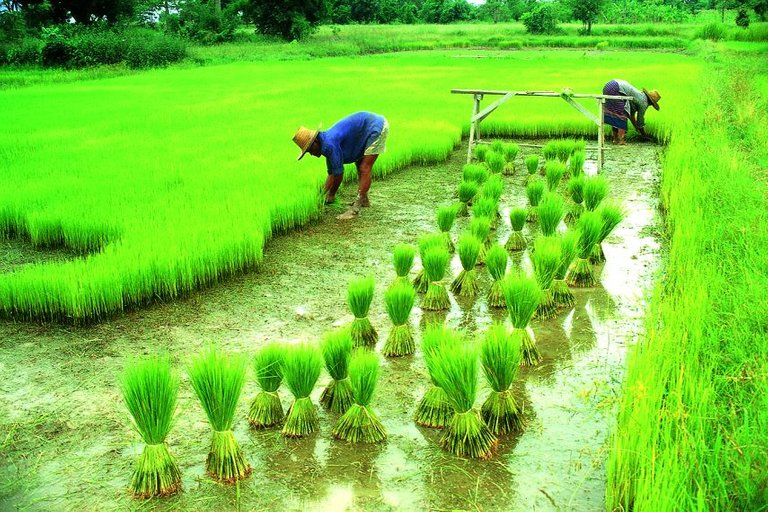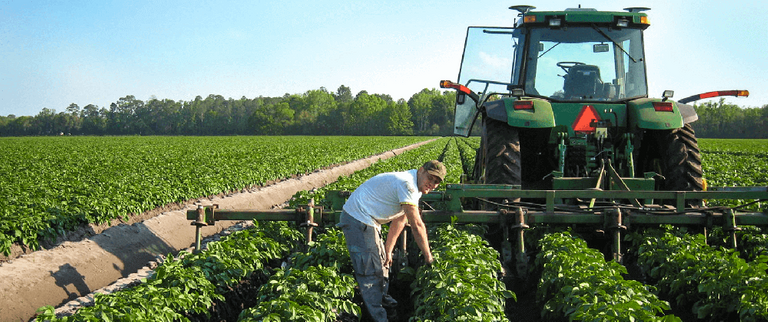Agriculture is the main driving force of economic development of an agricultural country. According to the Food and Agriculture Organization, more than 60 percent of the world's population has chosen agriculture as their main source of livelihood. Developing countries rely on agriculture for
economic development and the majority of people depend on agriculture.
In this article we will go over
- China
- India
- Bangladesh
- USA
Chinese Economy: Agriculture
Despite being a developed country, China is struggling to produce food for its large population. The majority of China's population is agricultural. China's total agricultural land area is 1.2 million square kilometers, which is 6 percent of the world's total agricultural land. In agriculture, the main food grains of China are paddy, wheat, maize and the main crops are cotton, nuts, mustard, sugarcane etc.
 credit:DP
credit:DP
China is the world's largest producer of meat and grains. In the late 1970s, the agricultural sector's contribution to China's GDP began to grow as agriculture gained importance. In 1980, the agricultural GDP stood at 30 percent. In 1983, it improved to 33 percent and helped the Chinese economy move forward.
Indian Economy: Agriculture
India ranks second in the world in agricultural production. About half of the total population of India is directly involved in agriculture. In agriculture, India mainly produces milk, almonds, coconut, tea, jute, ginger, mango, chilli and lemon. India is second in the world in production of paddy, wheat, sugarcane, almonds and fish, India is first in the world in cattle production and even sixth in the world in coffee
production.
 Credit: mirosave
Credit: mirosave
“
In 1970, India earned 41.31 per cent of the total GDP from agriculture which is about half of the total GDP. From 1980 to 1984, India achieved an average of 35% from agriculture, which took a country's economy to a unique height. In the 90's, due to population growth and declining arable land in India, the amount of GDP from agriculture started declining. However, from 1975 to 2016, India earned an average of 20
percent of GDP from agriculture.” source
Bangladeshi Economy: Agriculture
Bangladesh is an agricultural country. Agriculture is the largest source of employment for Bangladesh as a major agricultural country. Due to unfavorable weather conditions, farmers have been playing a leading role in agriculture in the economy of Bangladesh. In the nineties, the government introduced modern irrigation pumps, modern agricultural machinery and agricultural credit facilities to take agriculture forward in Bangladesh.
 Credit: Gk
Credit: Gk
At present, paddy, wheat, mango and jute are the main crops of Bangladesh. Paddy is the main crop of Bangladesh in terms of yield. Bangladesh ranks fourth in the world in terms of rice production. In 2005-2006, the production of paddy was about 29,000 metric tons.” Source ” On the other hand, in 2005-06, Bangladesh's wheat production was 9 million metric tons. However, in the 1970s, wheat cultivation in Bangladesh was very limited.
Its production began to increase in the eighties as the demand for it in foreign trade gradually increased. In 1975, Bangladesh was able to produce a record amount of 1.5 million metric tons of gall. From 1980 to 2000, the average GDP of Bangladesh in agriculture was 25 percent. As a result of population growth and reduction of crop land, the average GDP of Bangladesh from 2004-2016 is 15 percent which plays a leading role in the economy of Bangladesh. source
Now let’s compare the most developed economy,
United States Economy: Agriculture
The United States ranks 9th in total GDP from the Agriculture sector. The change in the United States Economy from an Agrarian economy to an Industrial economy happened in the beginning of the 1900s. In the founding of America, and in the 1800s, Agriculture and all its derivatives were USA’s biggest bread and butter.
“While farmland may stretch far and wide, farmers and ranchers themselves make up just 1.3% of the employed US population, totaling around 2.6 million people. Today, there are about 2 million farms in operation in the US, a steep decline from 1935, when the number of farms peaked at nearly 7 million. Meanwhile, back in 1840, workers in the agriculture industry made up 70% of the American workforce.” Source
 Credit: potatoesusa
Credit: potatoesusa
The current trend in the USA and Gardens around the world is automation and sensors. With the amount of technology and small, medium, large farms, we could see the United States take advantage of the Automation age in Agriculture. Just recently, President Trump signed a deal with the Chinese for American farmers to grow American Agriculture for the
Chinese, right before the coronavirus. This deal benefits both parties and we will see how the Chinese respect the deal or become more generous to USA farmers since they released a potent Virus to the world. Overall, the Chinese trade deal could be the saving grace for the world as they would not benefit at all from cutting off trade or starting War, their people would starve.
Thanks for reading.
Congratulations @awladtalukder! You have completed the following achievement on the Hive blockchain and have been rewarded with new badge(s) :
You can view your badges on your board And compare to others on the Ranking
If you no longer want to receive notifications, reply to this comment with the word
STOPDo not miss the last post from @hivebuzz: